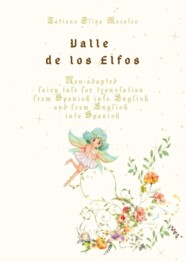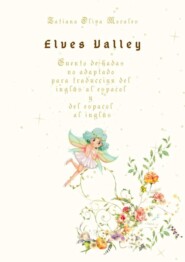По всем вопросам обращайтесь на: info@litportal.ru
(©) 2003-2024.
✖
Moscow, the 70s. Book 1. Childhood Memories
Настройки чтения
Размер шрифта
Высота строк
Поля
Tatiana Oliva Morales
The book contains eight stories dedicated to life in Moscow and the USSR in the seventies of the twentieth century. These are my memories of childhood, parents, friends and school. About how children lived in that time, which sank forever. In this book, I tried to convey my childhood sensations and perception of those years.
Moscow, the 70s
Book 1. Childhood Memories
Tatiana Oliva Morales
Illustrator Tatiana Oliva Morales
Cover designer Tatiana Oliva Morales
© Tatiana Oliva Morales, 2019
© Tatiana Oliva Morales, illustrations, 2019
© Tatiana Oliva Morales, cover design, 2019
ISBN 978-5-0050-7446-1 (т. 1)
ISBN 978-5-0050-7417-1
Created with Ridero smart publishing system
Sparkling water machines
Sparkling water machines
I have got a childhood friend, Gella. Sometimes we arrange evenings with our childhood memories. These memories are sometimes very unexpected and moving. For example, yesterday we remembered soda machines with sparkling water. As a rule, they were close to the metro stations.
Among the machines there was always a cheap one. The water in it was just with soda, but without syrup. The remaining machines dispensed sweet sparkling water. It was possible to buy a glass of water for 3 kopecks with one serving of syrup, and double syrup costed about 5 or 6 kopecks – here our opinions differed, Gella remembered the number five, and I remembered six. But is it really important?!
I grew up in Moscow, and Gella in Batumi. Yesterday, we found out that Batumi soda machines favorably differed from Moscow ones – the children in Batumi were allowed to beat them slightly, because in that case, they gave out a double portion of soda at the price of the usual one, we, Moscow children, would never have thought of that, because in Moscow the laws were honored more strictly than anywhere else in the USSR.
Next to the soda vending machines was usually a wheeled cooler tray from which a little plump woman of indefinite years sold ice cream. She always stood behind the ice cream tray dressed in a consistently slightly blurred white coat.
There were several types of ice cream in the tray: ice cream in cups, popsicle on a stick, ice cream for 48 kopecks and, of course, my favorite fruit ice cream. There was also an “ice cream cake”, as my mother called a chocolate ice cream.
My school was near the Park Kultury metro station. Therefore, next to it there was a row of vending machines with sparkling water, a woman with ice cream nearby, and a “Donut shop” a little further away. There, they prepared and sold hot donuts, plentifully sprinkled with powdered sugar. They were warm and tasty, but very high-calorie.
At that time I was engaged in figure skating and ballet, so, as a rule, I only looked at them, and then with envy, I watched how my best friend Lyudka Koyeva was eating them appetizingly on the way from school.
Kremlin canteen and black caviar
The building in the embankment Bersenyevskaya where the Kremlin canteen was situated.
My dad worked in a leadership position in the Council of Ministers of the USSR, so the products we received in the Kremlin canteen in the embankment Bersenyevskaya. As I remember, the canteen was a hall of a round or oval shape There were many windows for issuing products for special coupons in it around the perimeters. Neat, well-groomed saleswomen in chef’s caps wrapped orders into several layers of dark beige thick paper, some of the products were given in the same colored long bags without handles.
Вы ознакомились с фрагментом книги.
Приобретайте полный текст книги у нашего партнера:
Приобретайте полный текст книги у нашего партнера:











